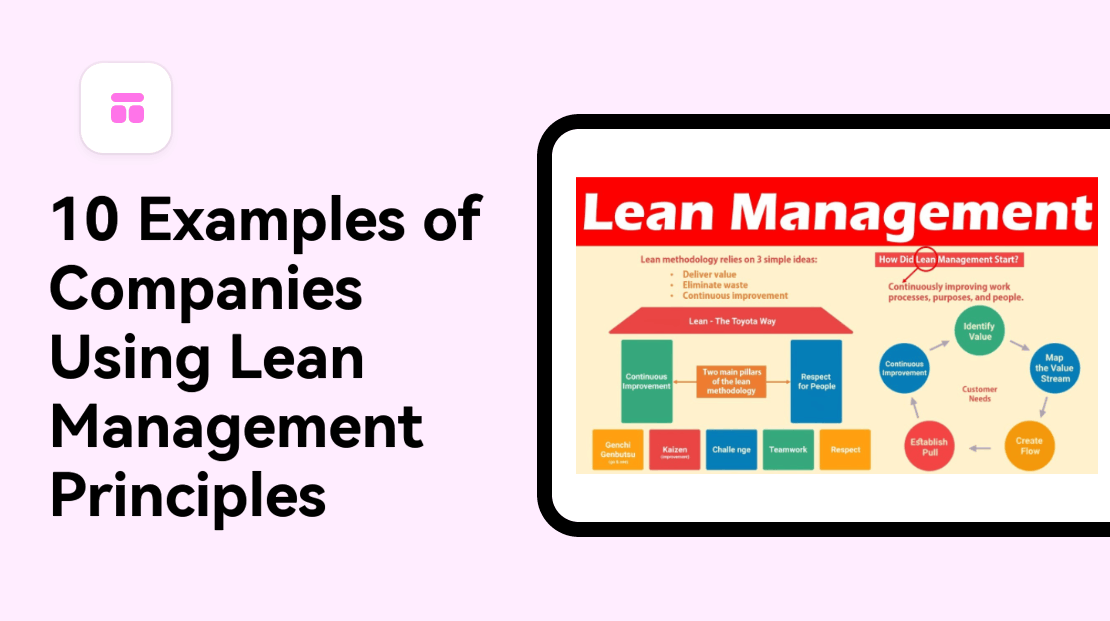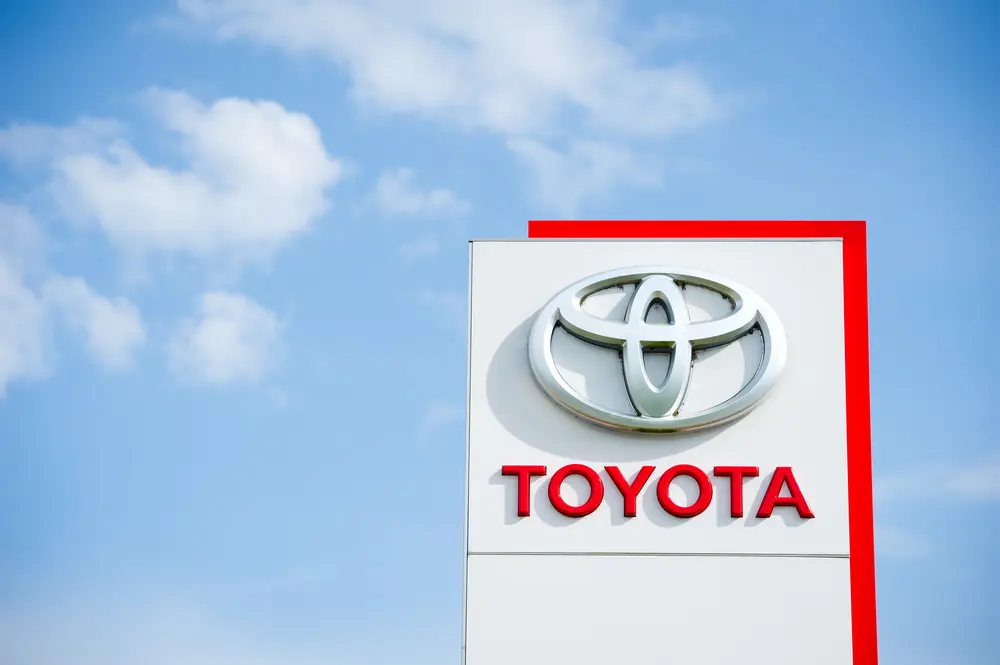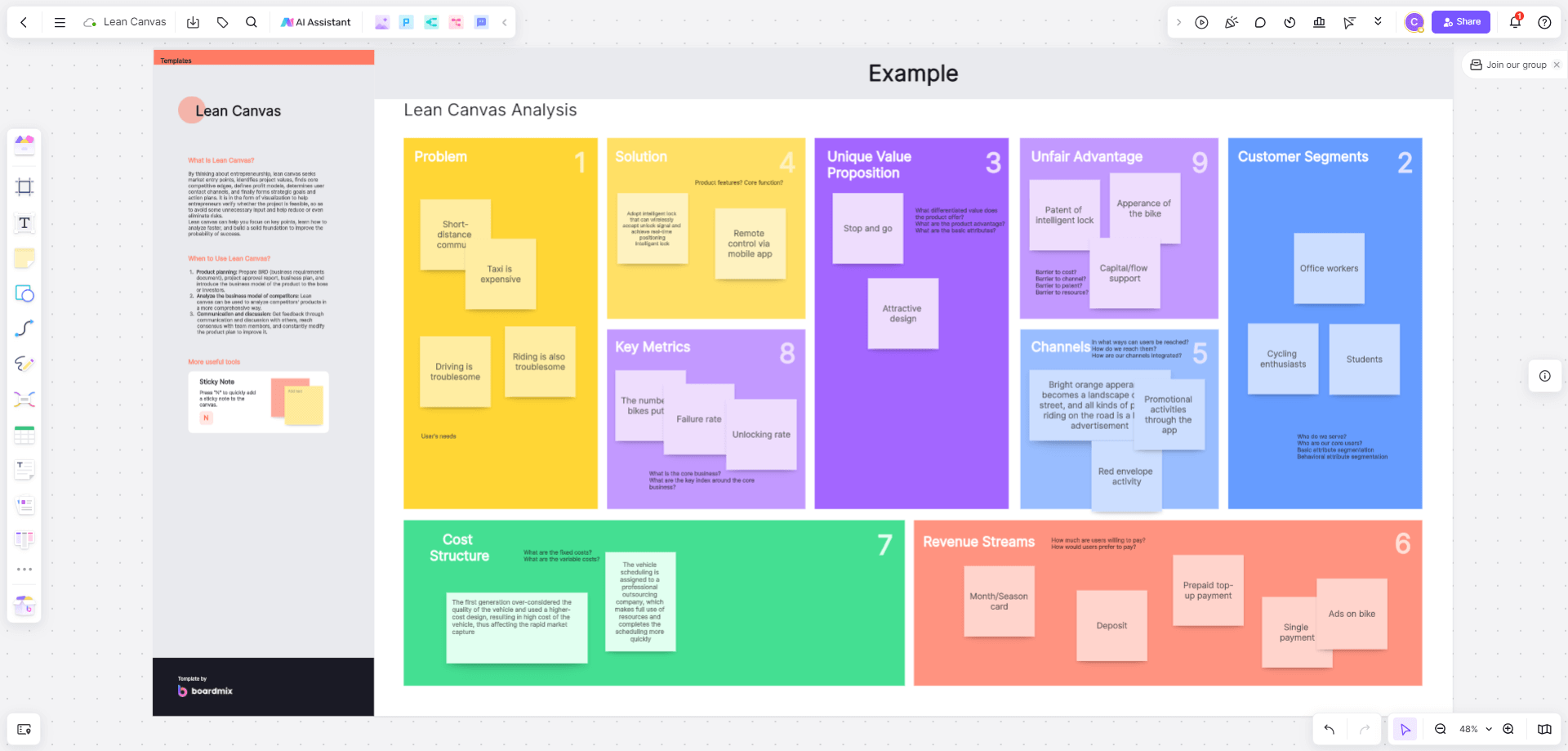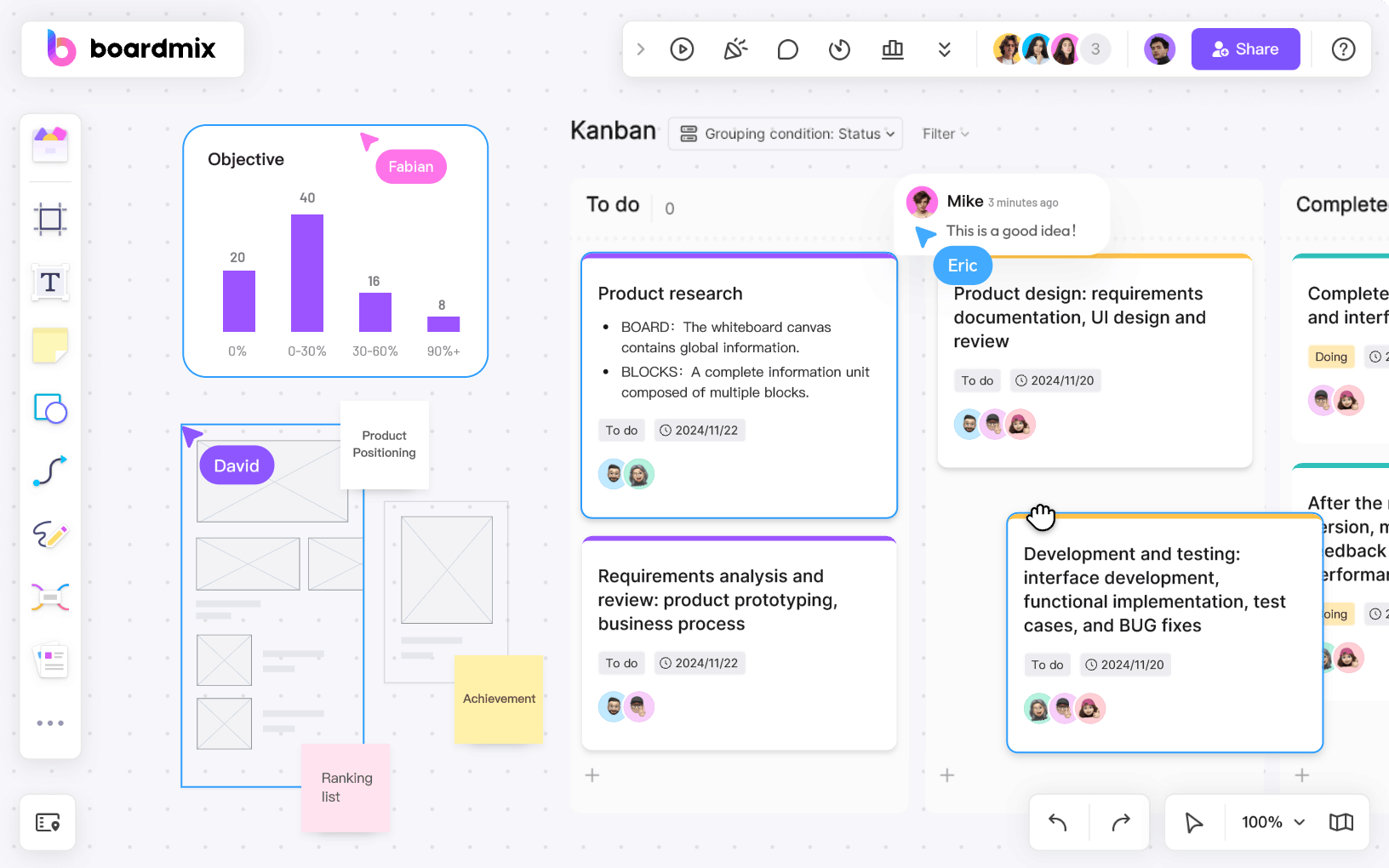Businesses use different methods for managing and organizing their work. However, the common goal is to improve the performance of a company and its profitability. Inspired by Toyota's production process, lean management is a popular work organization method for improving the performance of a company.
This article will provide a simple definition of this concept and a few examples to demonstrate how it works. Keep reading.

What Is Lean Management in Simple Terms
Lean management is a type of business methodology designed to increase the efficiency and quality of an organization. It eliminates wasted resources such as time, effort, and money to ensure everything is used optimally. This type of management is often referred to as lean manufacturing or lean production. The basis of the idea is to produce the most valuable and best services or products for the clients at the right price.

10 Examples of Lean Management
To clearly understand the concept of lean management, let’s have a look at a few examples.
Example of Lean Management – Amazon
Amazon uses lean management principles in its fulfillment centers. The company operates a vast network of fulfillment centers globally, which are used for storing and shipping products to customers. To ensure its fulfillment centers are running efficiently and cost-effectively, Amazon uses the following lean management tools and techniques.

- Pick-to-Belt Process: Products are stored on shelves ready for shipment. Workers pick them and place them on conveyor belts, which lead to the parking area.
- 5S System: All workspaces are organized in a way that ensures maximum efficiency and safety.
- Kaizen: A continuous improvement process in which employees are encouraged to identify and eliminate waste from their work processes.
- Just-in-Time Inventory: An inventory management system that minimizes the amount of inventory on hand, significantly reducing the costs and risk of obsolescence.
Example of Lean Management – Nike
Nike uses lean management principles to deliver value to customers while minimizing costs. With a vast network of factories around the world, it relies on lean management to ensure smooth processes. The specific tools and techniques that Nike uses include:

- Just-In-Time (JIT) Inventory: An inventory management system that minimizes the amount of inventory on hand, reducing the costs and risk of obsolescence.
- 5S System: A system for organizing and maintaining workspaces
- Kaizen: A continuous improvement process where employees identify and eliminate waste from their work processes.
- Visual Management: Using visual cues to communicate information and identify problems in the workplace
Example of Lean Management – Adidas
Adidas uses lean management principles to deliver value to customers while minimizing costs in its supply chain:

- Supplier Collaboration: Adidas works closely with its suppliers to identify and eliminate waste from the supply chain and streamline the ordering process.
- Direct-to-Store (DTS) Shipping: Adidas ships products from its factories directly to its stores, reducing the amount of inventory it needs to keep on hand.
- 5S System: Organizing and maintaining workspaces for enhanced efficiency and safety.
- Kaizen: A continuous improvement process where employees identify and eliminate waste from their work processes.
- Just-in-time (JIT) inventory: Inventory management system that minimizes the amount of inventory on hand.
Example of Lean Management – Toyota
Toyota uses lean management principles to deliver value to customers while minimizing costs. The company developed the Toyota Production System (TPS) in the 1950s and 1960s, which was also the foundation of lean management. The company principles include:

- Just-In-Time (JIT) Inventory System: Having the right materials on hand when needed while reducing unnecessary storage costs.
- Kaizen Process: Toyota employees are constantly looking for ways to improve their work, and get rewarded for their suggestions.
- Single-Piece Flow: Toyota produces cars one at a time, based on customer demand to optimize the amount of inventory needed at hand.
In the past, Toyota produced its cars in batches. The process was inefficient and led to overproduction and wasted inventory. The single-piece flow process enabled Toyota to reduce the time it takes to produce a car by 25%, saving Toyota millions of dollars in the process.
Example of Lean Management – Ford
The Ford Motor Company has been using lean manufacturing for years. The principles used in its operations include:

- Just-In-Time (JIT) Inventory System: Ford ensures that it only has the right materials on hand when it needs them.
- Assembly Line Process: Every worker has a specific task to perform, and the tasks are performed in a sequence to minimize movement and time needed to assemble a vehicle.
- 5S System: Organizing and maintaining workspaces to improve efficiency and safety.
- Kaizen: Employees continuously identify and eliminate waste from their work processes.
- Visual management: Use of visual cues to communicate information and identify problems in the workplace.
Example of Lean Management – Intel
Intel is a leading semiconductor company in the world. It has been using lean management principles since the early 2000s to improve its operations:

- Just-In-Time (JIT) Inventory: The company minimizes the amount of inventory on hand
- Kaizen: Continuously improves its manufacturing processes.
- Product Development Process: Streamlined product development to reduce the time taken to bring new products to market.
- Reduced Manufacturing Cycle: Streamlined manufacturing process to reduce the time taken to produce a semiconductor chip.
- Improved Product Quality: Continuously identifies and eliminates defects from the manufacturing process.
Example of Lean Management - FedEx Express
FedEx Express is a global leader in transportation and logistics that uses lean management principles to improve its operations and deliver value to its customers:

- Package consolidation process: Combining multiple packages into a single shipment to reduce the number of shipments needed.
- Aircraft Maintenance Process: Streamlining the maintenance process and reducing the time taken to get an aircraft back in service.
- Customer Service: Improved efficiency and effectiveness in customer service operations
- Supply chain costs: Improved efficiency and effectiveness of its supply chain management.
Example of Lean Management - Bank of America
Bank of America is one of the largest banks in the United States. As a leader in lean management, the bank uses the following principles:

- Loan Processing Process: Streamlined loanprocessing with minimal time to approve and fund loans.
- Customer Service Operations: Reduced wait times for customers and improved customer satisfaction.
- Reduced Risk Management Costs: Improved efficiency and effectiveness of risk management operations.
- Reduced IT Costs: Improved efficiency and effectiveness of IT operations, which reduced costs.
- Core Operations Functions: Improved account opening process, branch operations, call center operations, fraud detection operations, mortgage processing operations.
Example of Lean Management - General Electric
General Electric (GE) is a leading multinational industrial conglomerate operating in several industries from aviation to healthcare and renewable energy. The company's use of lean management principles include:

- Streamlined Manufacturing Process: Reduced the time it takes to build a gas turbine engine by 30%.
- JIT inventory: Reduced inventory levels by 50%, minimizing the amount of inventory on hand and cost of storage.
- Defects Elimination: Improved product quality by 10% by identifying and eliminating defects from the manufacturing process.
- Product Development Process: Reduced product development time by 20% by streamlining the product development process and reducing the time it takes to bring new products to market.
- Core Functions: Improved core functions, including supply chain management, customer service operations, research and development operations, and office operations
Example of Lean Management - Coca-Cola
Coca-Cola is a multinational company manufacturing and distributing a range of beverages. The companies started using lean management in the early 1990s, and continuously improves all its operations:

- Waste Elimination: Reduced water usage by 20%, saving money and reducing environmental impact.
- Energy Conservation: Reduced energy consumption by 15% by eliminating waste from consumption processes.
- Improved Manufacturing Process: Reduced waste by 10% by identifying and eliminating waste from manufacturing and distribution processes.
- Customer service operations: Improved customer service satisfaction by 5% by improving the efficiency and effectiveness of representative
- Overall Process Improvement: Enhances product development process, supply chain management, manufacturing process, distribution process, and sales and marketing process.
Lean Management Templates & Tool
Boardmix is an all-in-one platform for lean management. It offers several templates related to lean management, including Kanban, SMART, Fishbone root cause analysis, PDCA, and 5 whys.
With the drag-and-drop elements, you can easily create and customize layouts for your lean management tools. The Cynefine Framework template is also a good place to start in developing solutions to situations and challenges unique to a business. The Boardmix platform also allows you to add text and images, and collaborate with others in developing lean management.
FAQ. What Are the 5 Rules of Lean Management
The 5 rules of lean management considered a recipe for improving efficiency in the workplace include:
- Define Value: Define value from the customer's perspective, including the features and services they are willing to pay for. Knowing what customers value enables you to focus on eliminating waste from other activities.
- Map The Value Stream: The value stream is the sequence of activities needed to deliver a product or service to the customer. Mapping the value stream involves identifying all of the waste that occurs and ways of reducing or eliminating it.
- Create Continuous Workflow: Create flow by eliminating bottlenecks and delays, allowing products and services to flow smoothly from one step to the next.
- Establish Pull: Pull systems are based on customer demand by producing only when customers order.
- Seek perfection: Lean management is a journey of continuous improvement by eliminating waste and improving efficiency.











